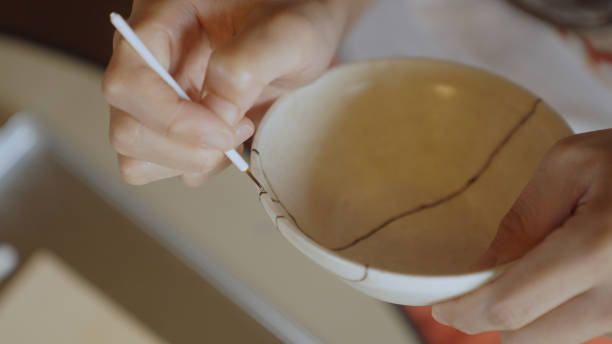Why Japan's Fascination with Parasols Persists It's no wonder that parasols have become a cherished accessory, offering respite from the scorching sun and enhancing the comfort of summer. The sight of countless individuals strolling about with parasols may strike foreigners as unusual. So, what is the enduring appeal of parasols in Japan? Let's delve into this cultural phenomenon.
The Arrival of Western-Style Umbrellas
in Japan
Parasols enjoyed popularity in
19th-century Europe, as exemplified by Claude Monet's iconic painting,
"Woman with a Parasol." However, the practice of carrying parasols
gradually waned over time in Europe. While some countries still incorporate
parasols into their culture, Japan stands out for its unique usage of parasols
as an everyday accessory.
In the 19th century, when Claude Monet captured "Woman with a Parasol – Madame Monet and Her Son" in his artwork, parasols were highly fashionable among the upper-class women in France and throughout Europe. These Western-style umbrellas found their way to Japan approximately 160 years ago. Before their introduction, Japanese umbrellas, crafted from bamboo and paper treated with lacquer and oil, were used for protection against both rain and sun. During the Edo period (1603–1868), they were not only functional but also a fashionable accessory, often adorning the belts of individuals and even making appearances in kabuki plays, a popular form of entertainment among the general public.
Western Umbrellas: A Coveted Style Statement
Upon their introduction to Japan,
Western umbrellas proved to be significantly more expensive compared to their
Japanese counterparts, making them inaccessible to the general populace.
Paintings and photographs from that era often depict people clad in traditional
Japanese kimonos while holding Western umbrellas. For upper-class women,
Western umbrellas represented luxury and style, constructed from materials like
cotton and linen and adorned with silk tassels on their handles and tips,
emphasizing their elegance.
Parasols Bring Color to the Sweltering Japanese Summers
Following the introduction of Western
umbrellas, their production in Japan gained momentum, gradually permeating
society at large. In the latter half of the 1990s, a fabric capable of blocking
a substantial amount of sunlight was developed, leading to the production of
UV-blocking parasols. These gained immense popularity among women seeking
protection from harmful UV radiation. Furthermore, these parasols were made
water-repellent, serving as a dual-purpose accessory, shielding against
bothrain and sun. Given the propensity of Japanese people to use umbrellas even
during light rain, these versatile parasols became widely cherished for their
convenience.
Initially, parasols were predominantly
used by women, but this dynamic shifted in 2007. That year, Japan experienced
an exceptionally hot summer, marked by record-breaking high temperatures,
elevating the risk of heatstroke. The Ministry of the Environment revealed that
using a parasol with a light-blocking rate of 99% or higher could reduce
sweating by 17% when the temperature soared to 30 degrees Celsius. As a result,
the practice of using umbrellas to combat intense sunlight and stay cool gained
popularity among men as well.
In 2013, the number of men using
parasols surged once more due to another scorching summer, and the term
'higasa-danshi,' meaning 'parasol boy,' became widely recognized.
In recent years, some schools have
incorporated parasol usage into their students' daily routines, particularly
when walking to school to mitigate the risk of heatstroke. Parasols designed
specifically for children have been introduced, along with lessons on their
proper usage. Recommendations have also emerged advocating the use of parasols
by all students, from elementary to high school, during the sweltering summer
months.
Today, parasols have evolved into a
stylish accessory that plays a pivotal role in navigating Japan's hot summers.
Their popularity spans across all demographics, adding vibrancy to the summer
landscape."



.jpg)



